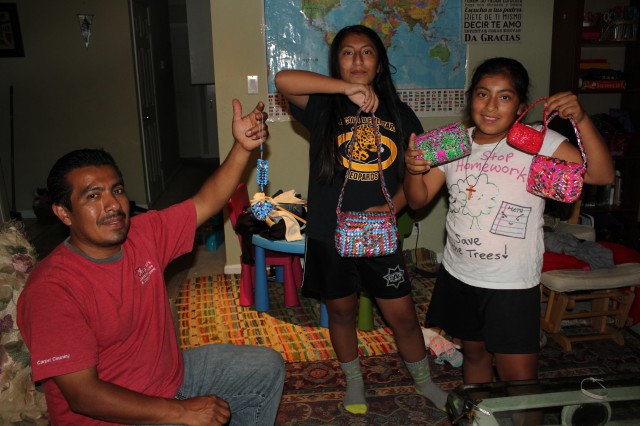Marks says the answer is not reshuffling the deck, but hiring more immigration judges. (Marks and the NAIJ also want immigration court to be an independent court, under the judiciary branch of government, and be removed from under the umbrella of the U.S. Department of Justice). Each of the nation's 230 immigration judges currently juggles an average of 1,500 cases at a time. Marks says moving kids up is already delaying cases that have been pending for much longer.
Bay Area immigration lawyer Kevin Crabtree worries it could even affect detained people — who are used to being the top priority for immigration court hearings.
“My concern is that you’re forcing people to compete for the limited time of immigration judges. And that people who are detained … will be detained longer because of the lack of resources,” says Crabtree.
One Man's Prolonged Detention
Crabtree’s client, Gerardo Mendoza, is an example of how long some wait already. Mendoza was locked in detention for 26 months. He says he passed the days creating handicrafts out of trash.
“When I was over there, I learned to make backpacks for girls, hearts, tiny shoes,” he explains.
Back home now in Newark, a town in southern Alameda County, Mendoza and his daughters, Kelly and Esther, show me items he wove them from recycled ramen noodle wrappers.
“He even made a wallet for my brother, and a picture frame,” says 10-year-old Kelly.
ICE detention is designed to hold certain immigrants for hearings. It's not meant as a punishment, but Mendoza says it sure felt that way.
“At night, they close the door. It’s locked. You cannot go out," remembers Mendoza. "Small windows over there, you’re looking outside. It’s really hard, I remember the beginning three days. I really, I … wanted to die.”
Mendoza’s story is not unlike those of many of today’s child migrants. He himself was only 17 when he came to the United States in the 1990s, escaping violence in Guatemala that killed a brother and a cousin. He was deported once after, he says, his asylum claim was botched and denied. But he quickly made his way back to his wife and infant son in California.
Immigration authorities caught up with him again when that son was 15 years old. By then, Mendoza had started a janitorial business, bought a home, and had three children, all born here.
The children didn't see their father the entire time he was locked up — more than two years.
“It was hard for him to be gone that long," says Kelly. "I couldn’t know why it was happening to me.”
“Were you thinking it was going to take that long?” I ask.
“Not really,” says Kelly quietly, “I like, lost hope in a couple years.”
Kelly says she thought she was dreaming when her dad came home one night a few months ago, after Crabtree won his release.
Though Mendoza’s case is still pending, he’s able to care for his family again. That includes his wife, who suffers hallucinations and has been repeatedly hospitalized. He’s also working to pay off $80,000 in legal debts.
Mendoza says he hopes for a more humane immigration process.
“This system is completely broke,” he says, “I hope they can do something soon.”
Balancing Competing Priorities
Former acting ICE director John Sandweg was in charge of enforcing that system. He agrees it is broken. But short of congressional action on immigration reform, he says prioritizing the children and families who have recently crossed the border is not only smart, but doable.
“I think it does make sense — you should not pull capacity from the detained population in order to focus on the kids,” asserts Sandweg. “But I think there's sufficient capacity amongst the immigration court judges to maintain your priorities on detention and maintain your priorities on the border piece of it."
California Republican Assemblyman Tim Donnelly of Twin Peaks, in San Bernardino County, says that when it comes to the influx of children, he doesn’t want to see any sent back to certain death -- but speedy decisions, and deportations, are key.
“We need to set up a triage court,” says Donnelly. “We need to pull retired judges out, we need to set them up in tents, not courthouses, and we need to get due process handled as expeditiously as possible.”
Meanwhile, there’s a chance Mendoza’s prolonged detention could convince the nation’s top administrative court to allow more immigrants out on bail while they await their deportation decisions.
Crabtree says the Bureau of Immigration Appeals could decide no immigrant should be detained for longer than six months without a bond hearing.
“I believe that most Americans are not aware that this is happening,” says Crabtree, “that their own government is holding people for so long essentially for no reason.”
Crabtree says the move could reduce pressure on courts juggling the competing priorities of children and those in ICE detention.
